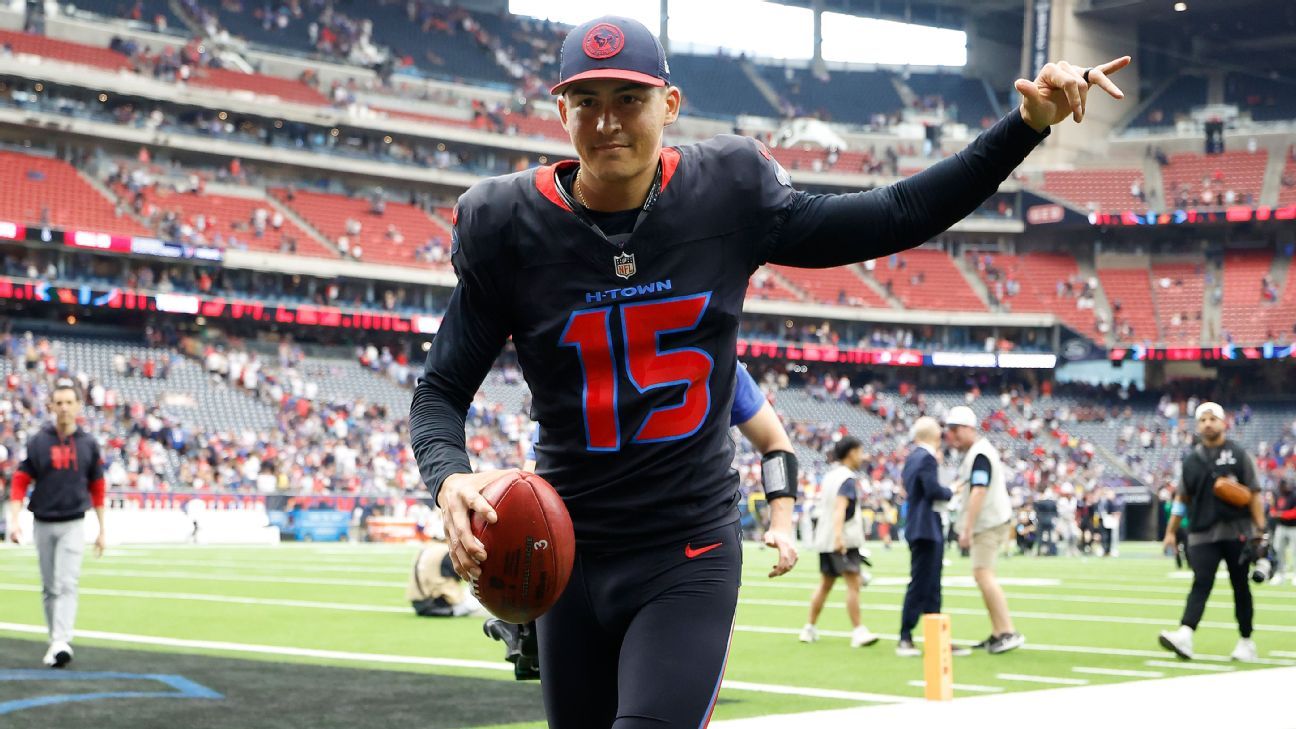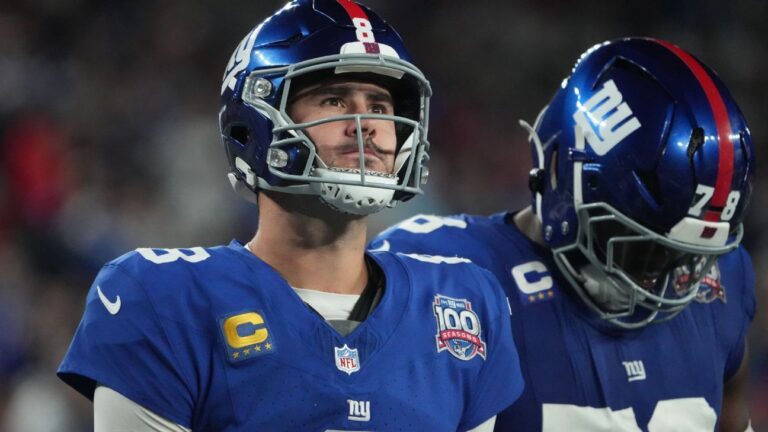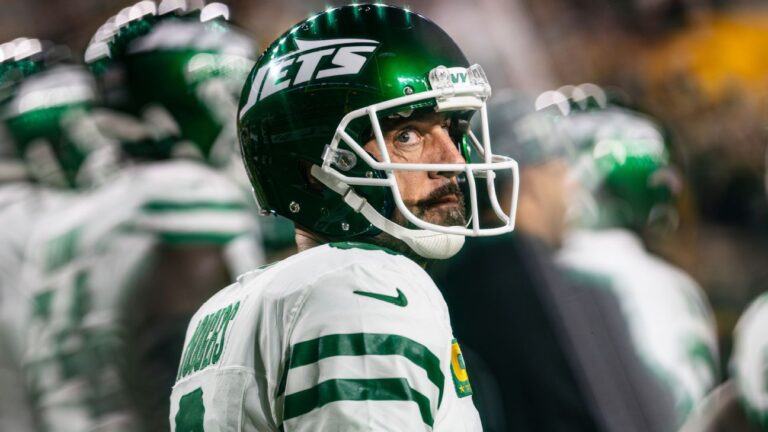-
Kalyn Kahler, ESPNOct 20, 2024, 06:45 PM ET
Something weird happened at Lambeau Field on Sunday.
In the first quarter of Green Bay’s eventual 24-22 win over Houston, Texans kicker Ka’imi Fairbairn hooked a kickoff left and out of bounds at the Packers’ 5-yard-line. An official threw the penalty flag for an out-of-bounds kickoff, which is penalized by spotting the receiving team the ball 25 yards from the spot of the kick. But when Fairbairn ran to the sideline, his teammates cheered and high-fived him.
Fairbairn kicked from the 50-yard-line, instead of the 35-yard-line, because a Green Bay defender was flagged for unsportsmanlike conduct on the previous play, a Houston field goal. That 15-yard Green Bay penalty changed the spot that Fairbairn would kick off from, moving him up from the 35 to the 50-yard-line. And that 25-yard penalty on the out-of-bounds free kick meant Green Bay would start on its 25-yard-line.
But most viewers and spectators were left confused.
Editor’s Picks
Because the spot for a touchback is now the 30-yard-line, this specific scenario called for Fairbairn to hit an aggressive kick.
“If it [lands and goes through] the end zone, [the receiving team gets] it there at the 20,” Houston running back and kickoff team member Dare Ogunbowale said. “Best case scenario, they try to field, then we can tackle them at the 10. And worst possibility, it goes out of bounds and they’re at the 25.”
The worst-case scenario here actually gave the Texans better field position than a touchback, which has accounted for 65.6% of the season’s kickoffs through the early games in Week 7.
From the 35-yard-line, the standard kickoff position, an out-of-bounds kick means the ball is placed at the receiving team’s 40-yard-line, which gives the receiving team a short field. But in kicking from the 50, Houston’s defense actually gained 5 yards to its advantage by kicking out of bounds, rather than kicking into the end zone for a touchback.
Ka’imi Fairbairn’s kickoff out of bounds in Week 7 demonstrated a loophole of the dynamic kickoff. Photo by Tim Warner/Getty Images
Ogunbowale said special teams coach Frank Ross yelled to Fairbairn before the play: “Be aggressive!” The Texans could risk kicking out of bounds. In this case, it was actually the strategy.
“We knew going into it that if we were able to kick the ball from the 50, that we would have [Fairbairn] just be aggressive,” Ogunbowale said. “That’s just something that we noticed with the rule that was kind of foolproof way for us to have our defense get some good field position.”
The Packers punted on the subsequent drive after going three-and-out.
This kickoff hack is new this season, because under the previous rule, a touchback was taken to the 25-yard-line, which would eliminate a similar field position advantage.
Because there was significant wind at Lambeau Field, Fairbairn wasn’t able to hit the kick exactly where he wanted, per Ogunbowale, to get a bounce and make it hard for the returner to field it, or to roll into the end zone but not through, which would place the ball at 20. Instead, the ball flew out of bounds at the 5-yard-line, and Houston got its worst-case scenario, which was still better than the most likely scenario for a kickoff — a touchback at the 30.
“It’s definitely an advantage for keeping your composure after a [field goal], or after an extra point, so that you get those extra 15 yards,” Ogunbowale said.
Another difference to penalties enforced on kickoffs is the position of the kickoff team. Under the old rules, teams would have kicked the ball into play, and not out of bounds, because the kickoff team started on the same yard line as the kicker, so starting from the 50 meant they’d reach the returner 15 yards faster than normal.
But under the new rule, the kicking team lines up on the opposite 40-yard-line, 5 yards from the setup zone where the receiving team lines up, and doesn’t move with penalty yardage.
“That’s what’s weird about it, because before we would also have to move forward,” Ogunbowale said. “Some of the guys on the Packers thought that we were supposed to be up 5 yards also.”
The NFL has said that there will likely be adjustments to the new kickoff rules in the offseason, so perhaps this loophole will receive some scrutiny in that process. Until then, a penalty that moves up the kickoff spot presents a new advantage for kickoff teams.







